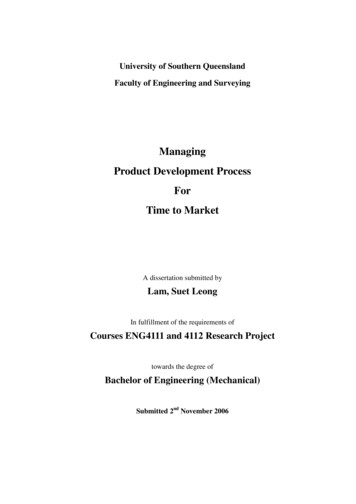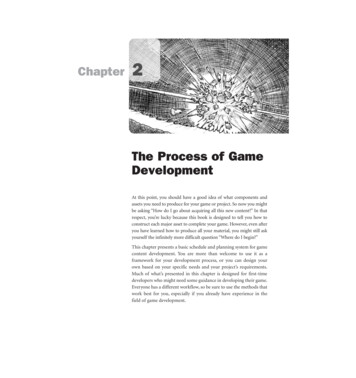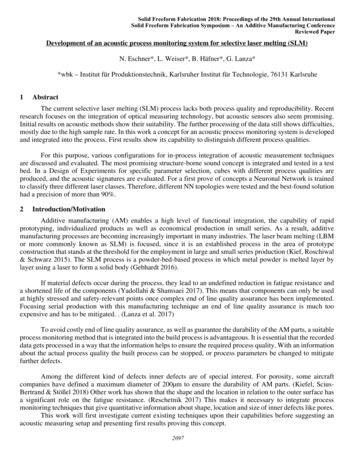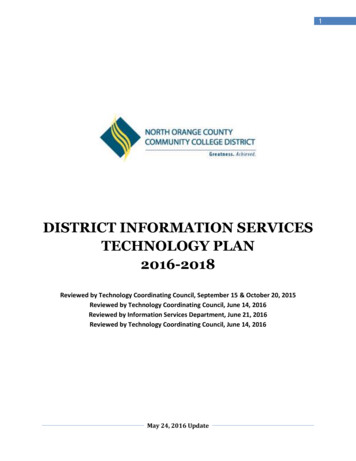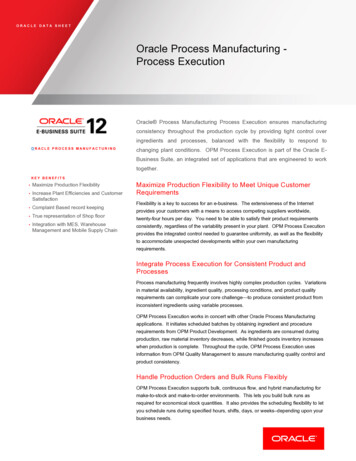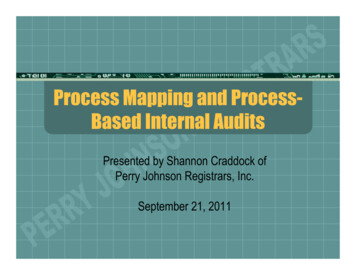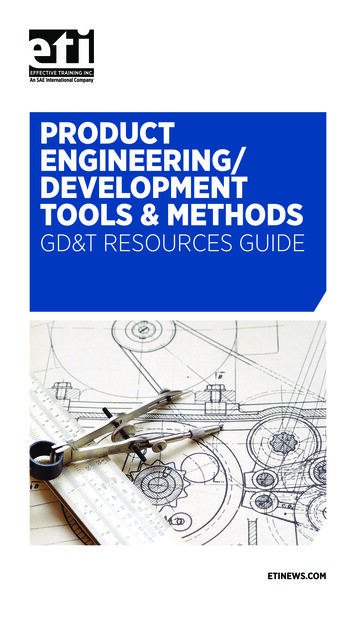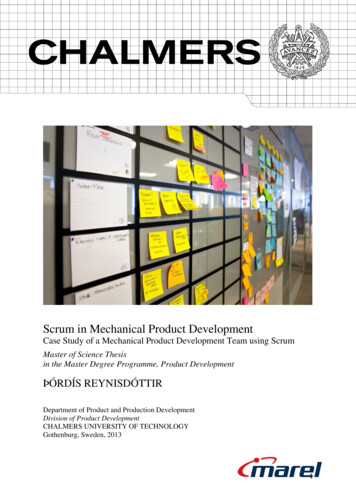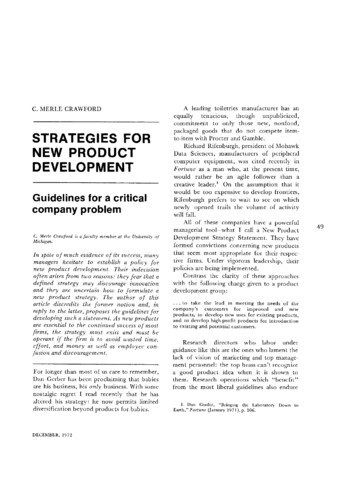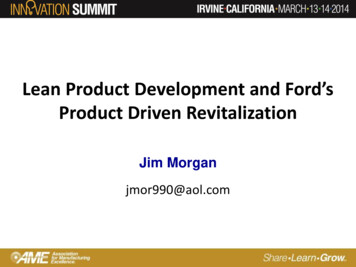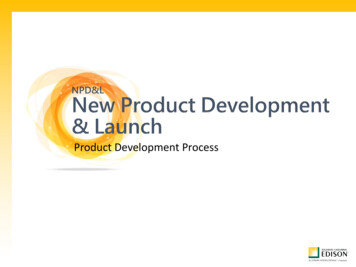
Transcription
Product Development ProcessNew Program Development & Launch
NPD&L Key Functions and ResponsibilitiesEffectively and efficiently deliver new customer products, programs andservices, and assess existing solutions that achieve Demand SideManagement (DSM) energy savings, improves customer satisfaction, andenhances SCE operational excellence.Key Functions:ProductManagementSolutionsManagement &GovernanceAppliedInnovationsSolutionsDevelopment &LaunchKey is andQualityAssuranceNew Program Development & LaunchRates &ProgramsR&DProgramManagementCodes nd Support3rd PartySolicitationandEvaluation2
Scope of Products and Services We ReviewSCE reviews and tests new and existing programs, products and servicesin the following areas:Energy Efficiency andDemand ResponsePricing and RatesHVAC and ControlsEnhancement to Existing RatesLighting and ControlsNew Rate or Rate ClosurePlug Loads and ElectronicsRegulatory ComplianceBasic Rates (CARE, FERA)Variable Pricing(PTR, CPP, TOU, RTP)“Clean” Rates(NEM, Green, PEV)Energy Services(OOR, Non-Energy billing)Agricultural and Process LoadsWhole Building Systems/ZNEEnergy StorageNew Program Development & LaunchCustomer Engagement andEnergy Management ToolsTools/AnalyticsBilling & PaymentBundles (includes pricing, DR,EE)BusinessData Privacy3
New Program Development & Launch4
Establishing a Standard ProcessPortfolio Governance Benefits: Enables alignment to strategic goals and objectives Creates uniform method and transparency of intake and evaluation Informs other departments of upcoming launches and their impacts andprepare appropriately Enables gate management through the product development life-cycle Allows tracking to goal based launchesProduct an offering to customers that mayinclude tools, technologies, programs &servicesStandard Product Development Life-Cycle:StrategyPlanningIdeaReviewInitiation &Build &Launch &EvaluationTestStabilizeOperationsGate 0Gate 1Gate 2Gate 3Gate 4Gate 5Ensure productsare aligned withregulatorystrategy andplans and/orcorporateinitiatives.Vetting processto reduce volumeof ideas to thosewith highestpotential andtechnicalfeasibility.Ensure proof ofconcept, costeffectiveness,and readiness fordevelopment.Evaluate successof productdemonstration.Ensurepreparation forlaunch.Evaluate successof launch.Ensurestabilizationcomplete andready for transferto operations.Periodically reevaluate productportfolio andmake retirementdecisions. The standard product development life-cycle providesclassic stage gate process driven by statistical data andclear strategic value. Functional Integration - Strategically focused productdevelopment lifecycle requires broad view andintegration with a large number of internal andNew Program Development & Launchenterprise functions including Product Management,Technology Management, Policy Management, ProjectManagement, Change Management, Marketing &Communications, etc. This ensures alignment movingaway from silo’d initiatives.5
Governance Includes All Levels ofSCE ManagementCustomer ServiceSenior Leadership TeamExecutivesDirectorNPD&LSenior SponsorSteering Monthly MeetingsSUPPORT:(as needed)Sub-Steering TeamAssigned BCDRepresentativesAssigned CSODRepresentativesAssigned CP&SRepresentativesAssigned esentativeAssignedRepresentativeLawMonthly MeetingHRNPD&L Working TeamWeekly MeetingCorp ComNPD&L Product Development ProcessStage / Gate ReviewsNote: Alignment with CS Business Planning, Program Management & Planning, in progressNew Program Development & Launch6
NPD&L 2014 Intake Process SummaryGate Activity 2014Internal Use Only2014 Total Intake:292Existing Projects (2013 & Prior): 39New Submissions (2014): 253Pending Gate Assignment & Review: 50Gate 0Idea ReviewGate 1Initiation & EvaluationGate 2Gate 0 Reviews: 207Accepted: 73% (151) Rejected: 27% (56)Gate 1 Reviews: 157Accepted: 84% (132) Rejected: 16% (25)Gate 2 Reviews: 80Build & TestGate 3Launch & StabilizeGate 4Accepted: 94% (75)Rejected: 6% (5)Gate 3 Reviews: 49Accepted: 98% (48)Rejected: 2% (1)Gate 4 Reviews: 18Accepted: 100% (16)Rejected: (0) Idea/Intake Form Prelim. Cost/Benefit Estimated Budget & Funding Test Results Charter Business Case IT approval (SCE) Pilot/Test Results Solution Codes Workpaper Revised Budget &Resources ScoreCard (SCE) Policy/ProcedureDocumentation Project/Launch PlanTotal ProjectsApproved: 52%Total ProjectsRejected: 30% Launch Report (SCE) Stabilization Criteria (SCE) Operation Report (SCE) Handoff Criteria (SCE)Operations2014 Totals: 52% Approved, 30% Rejected 17% Pending, 1% Completed/ClosedNew Program Development & Launch01.20157
From Idea to LaunchIntake Processoverview for newcustomer programs,products, andservices.New Program Development & Launch8
Working with Industry PartnersNew Program Development & Launch9
New Program Development & Launch10
Reaching the Customer SCE must be able to create plans and programs utilizing both the “utility” and “3rd Party”pathways to reach customers. This will ensure customers have the ability to choose the toolor solution that meets their needs. Leveraging both pathways provides SCE with additional functionality that can enhance energyreliability, reduce the time required for DR events, and can help improve power quality forthe consumer.EdisonSmartConnectMeter(two way)(one way)ProprietaryProtocolZigBee /SEPInterface3rd PartyCloudOpenProtocolNew Program Development & LaunchCustomerRouter orDevice11IoT PathUtility PathOpenProtocol
ArchitectureHome AutomationGateway3rd Party ServerControlsIOUOpenADR 2.0(To/From SCE)Calls DREventWi-FiHome 3, etc.WWWControlsRouterThermostatsHome 2Home 1SCE DRAS ServerProprietary internet(To/From server tothermostats/gateway)HVAC SystemWi-FiRouterControlsWi-FiRouterNew Program Development & LaunchThermostatsHVAC System
Mass Market: Third Party Load Control Objective 2014: Evaluate residential load reduction, leveraging cloud service connection with Smart ThermostatsIncrease cost effectiveness of existing programs such as SCE’s Save Power DayReduce load per SONGS Demand Response (DR) mitigation (CPUC A.12-12-017)Enable 3rd parties to evaluate potential of residential DR aggregation market Business Drivers Utilize existing customer base to eliminate equipment & installation costs SCE leverages its existing commercial OpenADR event notification process Leverage SmartConnect meters to enable pay-for-performance incentive Costs Customer: 100- 249 for Smart Thermostat with connected cloud service3rd Party performs all marketing for a nominal 20 management fee per customerCustomers receive 1.25 per kWh reduced during DR eventsEstimated SCE cost 80/kW and a Total Resource Cost ratio of over 1.5* Benefits Provide up to 0.75kW peak shaving per customer using current rate structureEach dollar invested could return 2-3 times kWh reduced vs. similar driven programsOver 10% take rate after a single touch pointSupports SCE’s stated goal to promote open standards (i.e. OpenADR)Additional cost effectiveness identified through modification of current tariff* 0.9 TRC or greater is typically required – this anticipated rating is the highest of all SCE’s residential DR programsNew Program Development & Launch13
Opportunities: Large / Commercial CustomersLooking at New Ways to Provide Savings (C&I). Energy efficiency and savings potential is expandingbeyond the traditional areas of ication EMS & HVAC Retrofits Lighting Zero-net Energy Building Efficiency Work Place Charging Vehicle to Grid –Demand Response &Energy StorageData & Analytics First Fuel Enhanced EnergyAdvisory and AuditToolsQuality &Reliability Renewable Energy Energy Storage Power QualityNew technologies have created new opportunitiesNew Program Development & Launch14
Small Commercial StudyWhy Small Commercial? Historically underserved market No assigned account managers Programs focused on large C&I and Residential Defaulted to Time of Use (TOU) rates last year Moving to Critical Peak Pricing (CPP) in 2017 More than 400,000 small business customers in SCE territory Large concentration in SONGS mitigation areaNew Program Development & Launch15
Small Commercial StudyObjectives: Identify low cost, easy to understand solutions Demonstrate viability of cloud based solutions Determine existing technology that may be leveraged Test DR parameters (response time, event duration,locational dispatch, etc.) to define a future cost effectiveprogram that balances grid needs with customer impact Utilize OpenADR 2.0bNew Program Development & Launch16
New Program Development & LaunchNew Program Development & Launch17
Charter Business Case IT approval (SCE) Revised Budget & Resources ScoreCard (SCE) Pilot/Test Results Solution Codes Workpaper Policy/Procedure Documentation Project/Launch Plan Launch Report (SCE) Stabilization Criteria (SCE) Operation Report (SCE) Handoff Criteria (SCE) Gate 0 Reviews: 207
